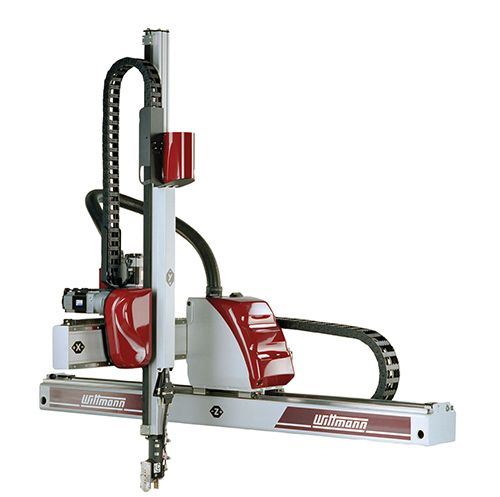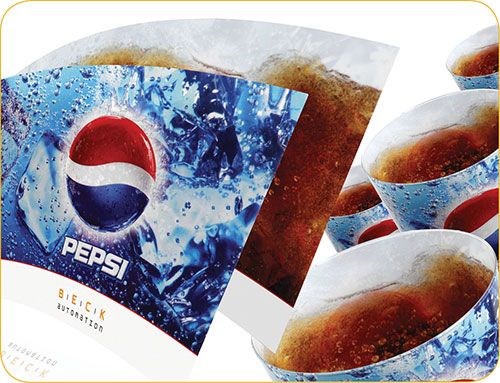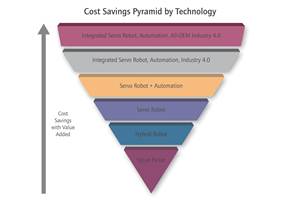News in Auxiliaries & Tooling at Fakuma Show
Late last month, Friedrichshafen, Germany, hosted Fakuma 2011, the largest European plastics show of the year, growing to be second in size and importance to the K show in Dusseldorf.
Late last month, Friedrichshafen, Germany, hosted Fakuma 2011, the largest European plastics show of the year, growing to be second in size and importance to the K show in Dusseldorf. A handful of exhibitors provided advance information on new auxiliary equipment and tooling products they would exhibit there. These included new robots and equipment for materials handling, blending, and drying, as well as some new hot-runner and other mold components.
ROBOTS WITH 20/20 VISION
As reported in our September “Starting Up” section, the Austrian parent of Wittmann Battenfeld, Torrington, Conn. (wittmann-group.com) is highlighting its new PowerVision option for integrating vision quality inspection with its Unilog B6 injection machine controls. A Wittmann W8VS2 SCARA robot used a digital camera and software from Cognex Corp., Natick, Mass., to inspect a full shot of parts within the guarding of a Micro-Power 15-ton micromolder.
Using robots for quality control is also the theme of the new “Sigma Inside” concept shown by Hekuma GmbH (U.S. office in Ann Arbor, Mich., hekuma.com). Hekuma claims to prove that servo-controlled takeout can outpace free-dropping parts. More important, maintaining control of the parts and cavity sorting allows quality traceability (with or without vision inspection in the cell) and automatic segregation of nonconforming parts.
Wittmann Battenfeld also showed a new model in its 8-Series all-servo robots. Aimed at presses in the 110 to 220 ton range, the new W818 has a payload capacity of 6 kg and a max. vertical stroke of 1200 mm. It has three servo motors and absolute encoders for all linear axes. The optional servo B/C axes add capabilities similar to jointed-arm robots: The B axis steplessly rotates the gripper and C swivel axis from 0° to 270°, while the servo C axis rotates the gripper from 0° to 180°. All intermediate B/C positions can be programmed with 0.01° accuracy. While the B/C option reduces the payload capacity to 4 kg, the W821 and W831 companion models can carry 8 kg with the option added.
The W818, like all 8-Series models, comes with the new R8.2 control system. It has two new software functions: Smart-Start enables a “blind start” of the robot without any special knowledge; and QuickEdit mode enables fast adjustment of the teach program.
Beck Automation of Switzerland (beck-automation.com) demonstrated in-mold labeling of clear PS drinking cups using labels printed on both sides, thus providing a decorated appearance inside and out. Beck supplied automation for label feeding and inserting and parts-removal and stacking. The four-cavity tooling was from Glaroform of Switzerland (glaroform.ch). The two-side-printed labels were from Viappiani of Italy. The demo took place in the Ferromatik Milacron booth, where a new F 160 machine molded the cups in 3.2 sec (U.S. office in Batavia, Ohio, milacron.com).
MATERIALS HANDLING & DRYING
Maguire Products, Inc., Aston, Pa. (maguire.com), displayed a new version of its Sweeper device for completely emptying Gaylord boxes without wasting operator time or resorting to cumbersome box tilters. It literally “sweeps” remaining pellets toward a vacuum pickup wand. The original model now comes in two versions that accommodate vacuum hoses with 1.5- and 2.5-in. diam. The latest enhancement is a new system for reducing changeover time from one box to another. It’s a dual control that automatically switches from a Sweeper in an empty box to a second Sweeper in an adjacent full one. The Sweepers are connected by a diverter valve. The empty box can be replaced without interrupting resin feeding.
Motan (U.S. office in Plainwell, Mich., motan.com) introduced the Spectrocolor G continuous loss-in-weight gravimetric blending system for up to six components and 0.2 to 1200 kg/hr per component. Aimed at extrusion, this stainless-steel system boasts dosing repeatability as tight as 0.5%. Said to be very cost-effective, it comes with a small PC and 5.7-in. color touchscreen.
Also new from Motan are three more sizes of Luxor central desiccant dryers—the Luxor 80, 120, and 160 (the numbers indicate m3/hr dry-air capacity). These mobile, compact units now can convey to up to 16 drying bins and 24 hopper loaders with up to three conveying blowers. The new models have been upgraded with two blowers and a closed-loop heat-renegeration system. They process up to 70, 100, or 140 kg/hr, respectively.
Wittmann Battenfeld has a new model of its Drymax Aton wheel-type desiccant dryer, which saw its initial debut at the K 2010 show. The stainless-steel Drymax Aton Primus model has a dry-air capacity of 120 m3/hr and comes with a 300-liter hopper. It operates continuously as a wheel dryer or in energy-saving EcoMode acts similar to a cartridge dryer. Dewpoint range is -40 to -65 C.
Wittmann also showed its completely revised Gravimax 14V gravimetric blender, a further development of the GMX 14R. It retains the real-time live-scale (RLTS) online metering system, but this new model has wear-resistant, stainless-steel valves designed to ensure consistent metering through the same valve of both virgin pellets and regrind prone to bridging. Model 14V has throughput capacity of 100 kg/hr and comes with a ball mixer and two load cells for higher metering accuracy.
Wittmann’s new Feedmax B105 receiver for central conveying systems is a 0.5-liter model for low throughput rates. And the company’s new M7.2 controller for central systems displays material flow, vacuum connection, and all network-bus and electrical connections. The system administrator can handle up to 64 different users with different levels of access. Easy user login can be accomplished with RFID chips.
NEW TOOLING DEVELOPMENTS
Last month’s Starting Up section presented a novel rotary-cube mold system from Zahoransky of Germany that molds two parts per shot and uses two side platens for in-mold assembly. Thus, all four faces of the mold are utilized on every cycle.
PSG Plastic Service Group (U.S. office in Stevensville, Mich., psg-online.us) introduced a novel “variable” hot-manifold concept, in which nozzles and injection points can be repositioned as necessary for different applications. This varioFold system is designed especially for prototype tooling, where ability to make rapid changes is particularly cost-effective.
Also new is a service called PSG remote, which will allow PSG hot-runner controllers to be serviced remotely via the Internet.
And Hasco (U.S. office in Fletcher, N.C., hasco.com) displayed several new components. Among them were an inclined sliding carriage for small to medium-sized undercuts and a hydraulic cylinder for actuating valve gates that allows the access to the nozzles without exposing the hydraulic drive unit. Also new is Valve Gate Shot, a needle-valve nozzle for packaging applications that offers new nozzle lengths at an attractive system price.
Related Content
Automation Evolution: From Robots to Work Cells, Solo Devices to Integrated Systems
Injection molding automation has progressed from devices to systems, from simplicity to more complex capabilities. The author traces this development through various levels of automation – all still available choices today – and analyzes the costs and capabilities for each level.
Read MoreAutomation in Thermoforming on the Rise
Equipment suppliers’ latest innovations exemplify this trend driven by factors such as labor shortages, higher-speed thermoformers and tighter quality control.
Read MoreEnsuring Repeatability: The Key to Effective Injection Molding Automation
One of automation’s key promises is repeatability: the same movement to the same location, time and time again. But to achieve that, all elements involved — robot, machine, EOAT, mold — must be in and stay in alignment.
Read More50 Years...600 Issues...and Still Counting
Matt Naitove marks his first half-century in plastics reporting, with a few of his favorite headlines.
Read MoreRead Next
Understanding Melting in Single-Screw Extruders
You can better visualize the melting process by “flipping” the observation point so that the barrel appears to be turning clockwise around a stationary screw.
Read MoreAdvanced Recycling: Beyond Pyrolysis
Consumer-product brand owners increasingly see advanced chemical recycling as a necessary complement to mechanical recycling if they are to meet ambitious goals for a circular economy in the next decade. Dozens of technology providers are developing new technologies to overcome the limitations of existing pyrolysis methods and to commercialize various alternative approaches to chemical recycling of plastics.
Read MoreTroubleshooting Screw and Barrel Wear in Extrusion
Extruder screws and barrels will wear over time. If you are seeing a reduction in specific rate and higher discharge temperatures, wear is the likely culprit.
Read More










.png;maxWidth=300;quality=90)






















